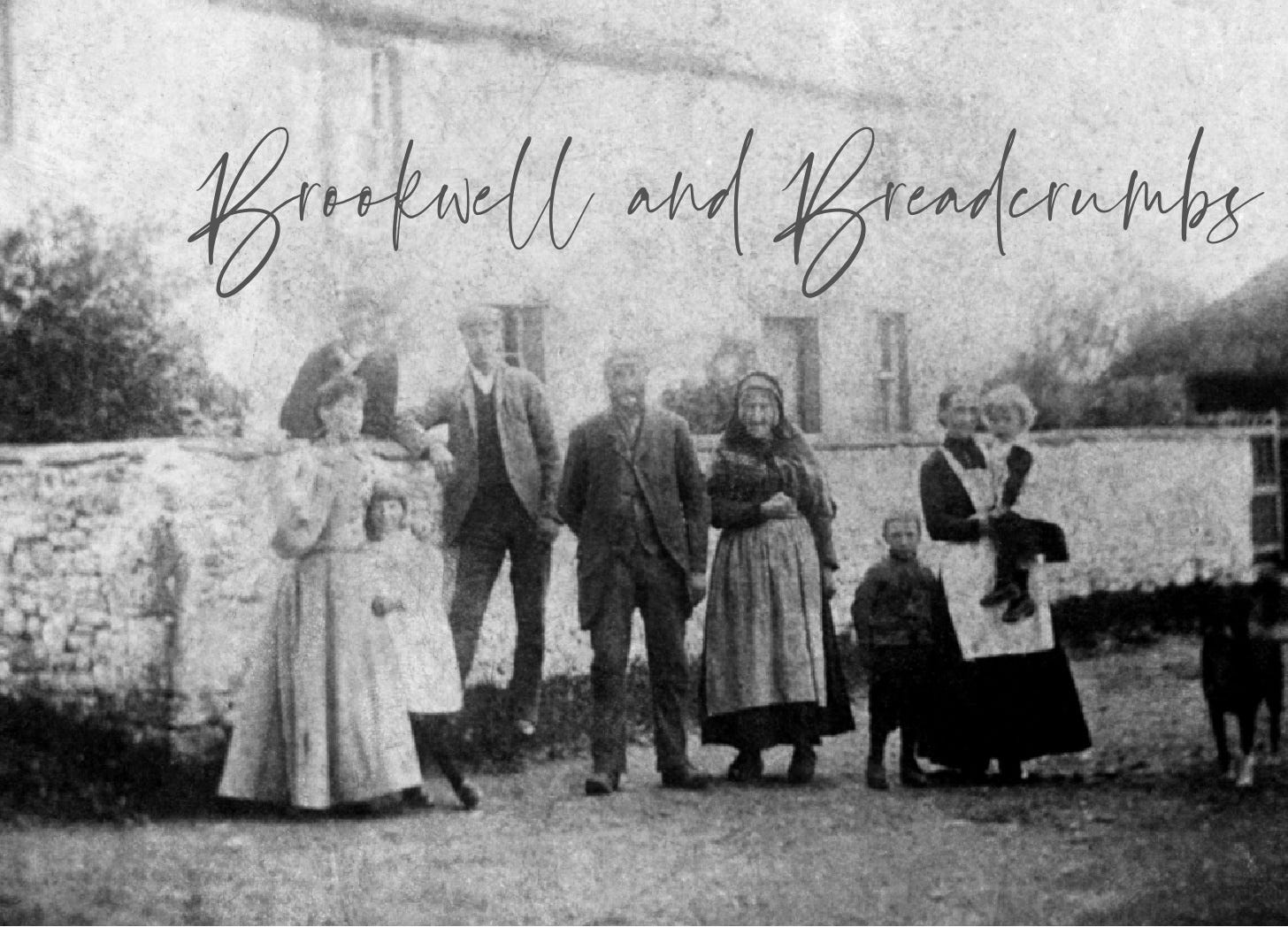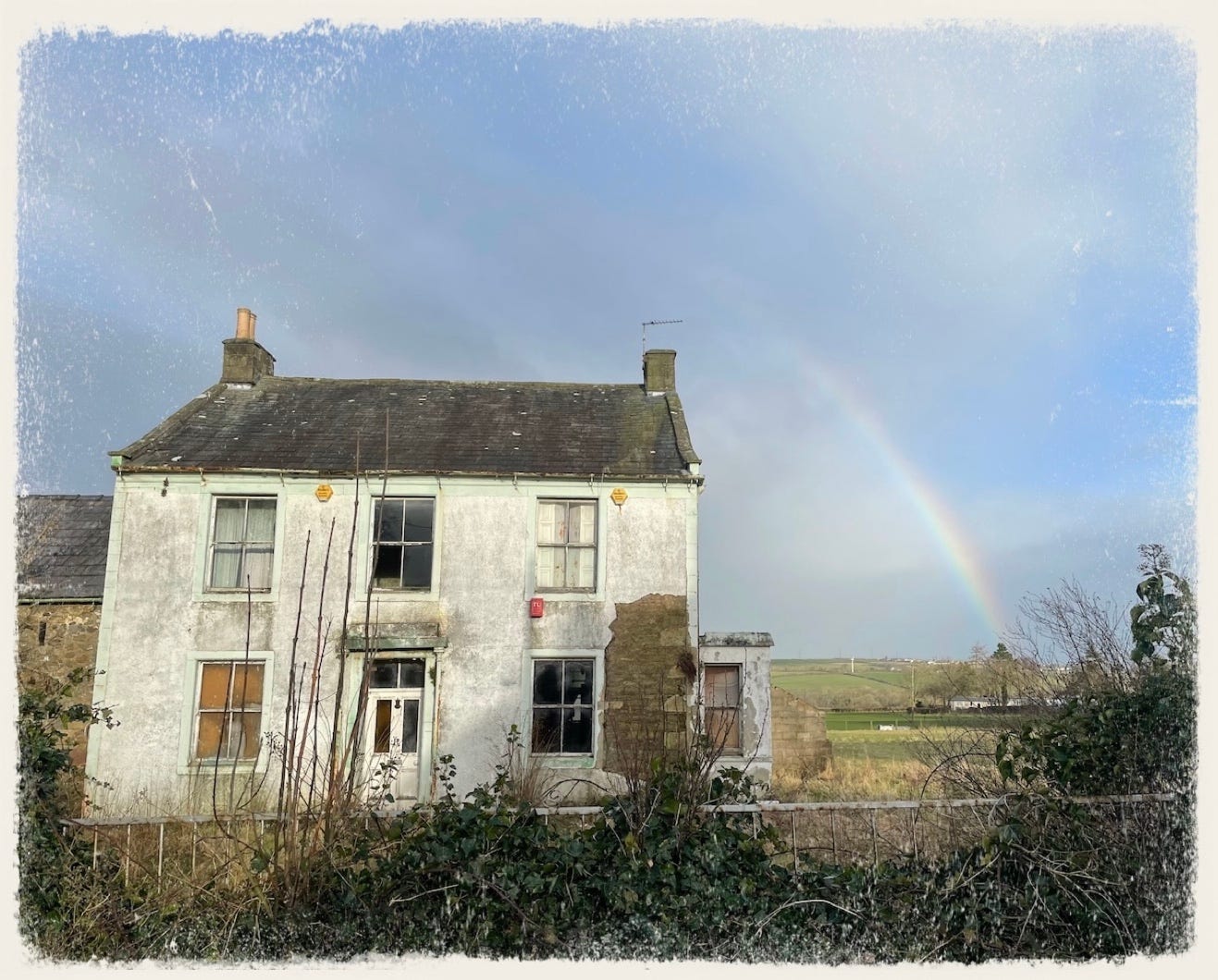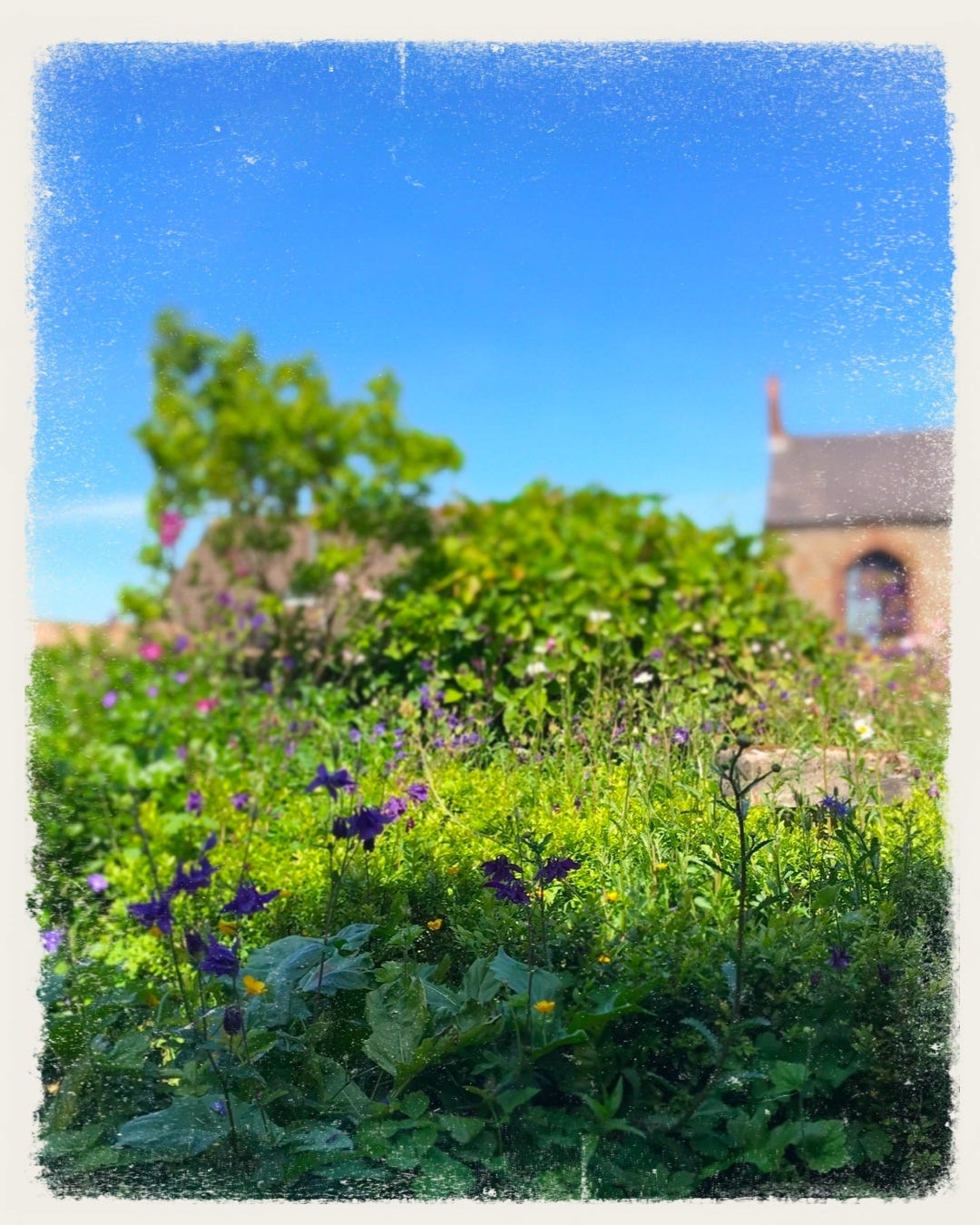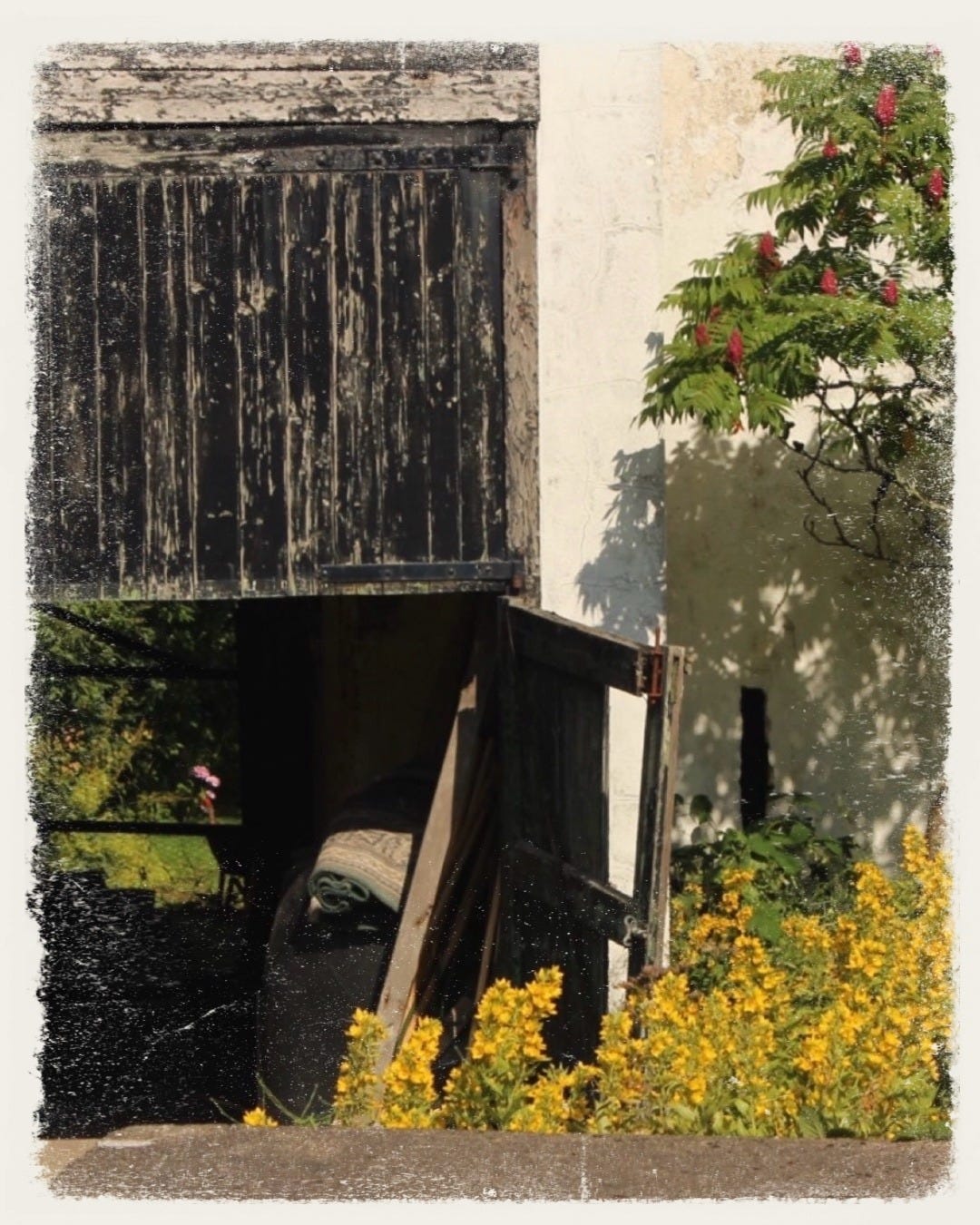A couple of weeks ago, I was talking to my neighbour, who has lived in the village most of his life. My neighbour asked about a couple who live in the village, but he didn’t know their names, didn’t know where they lived, exactly. We got to talking as we are wont to do, about the changing village, had a conversation about a family who’d once lived across the road, when my neighbour was a youngster.
“I remember John’s mother,” he said.
“Sarah Ann.”
“Yes. That’s right. Lovely woman.”
We got to talking about Sarah’s family history. And, while Sarah had died in the 1950s, I felt like I knew her, invested as I am in the history of the village.
“Aye. If you don’t talk about these folk,” my neighbour said, “they disappear.”
I wrote this essay, one of a series, for the website beforeweleave.co.uk. The website is a community archive centred around this village in rural West Cumbria, where I live with my husband. The community archive belongs to the people of this village. But many stories in it are also about how we look after the places and people who shaped a place, not for nostalgia’s sake, but as a radical act of care. In a time when so much feels untethered, returning to the lives that came before us is a kind of resistance. A community archive isn’t just a record, it’s a corrective to centuries of omission, and a reminder that remembering matters. So that’s why I publish some of the archive essays here on Substack too.
Why not stay around, then, for twenty minutes, whether you’re listening via the podcast or reading this transcript with its images and bibliography. Because remembering is an act of love, and what we love, we shouldn’t lose, right?

Coals and a Chapel
M and I live in our two-up-two-down cottage that was once a cow byre, opposite a grand house that was once a chapel.
The building of the Wesley Chapel was one of great workmanship, for the sandstone that was used, every piece was manhandled from the West Croft Field and carted by John Clark. The ironwork inside and the railings that front the building was given free by the blacksmith of the village, Mr Williamson Clark.
(Methodist Chapel 1875-1975 Centenary publication.1)
There were small quarries around the village, and further out, mining. Scattered signs of industry in what was, and remains, a pastoral place. Miners first drew coal near the village almost three hundred years ago. Miss Dykes, Lady of the Manor, co-owned two pits in the area. By 1862, Joseph, born in the village, the man who would one day become Sarah Ann’s uncle, joined the North of England Institute of Mining and Mechanical Engineers. Joseph received his First Class Certificate of Service as a manager of mines under the Coal Mines Regulation Act the following year.2
Admitted to a city asylum in 1890, Joseph states he was half-poisoned, and that folk in the west end of the village had electrified him. Dr Farquharson and his staff write up their notes. People, Joseph says, had an occult means of knowing what he is writing.
“Even if I got inside an iron boiler they’ve means of seeing what I’m writing about.”3
The 1890s brought economic challenges too. In April 1895, the Maryport Advertiser4 reported “very gloomy” prospects for the coal trade in West Cumberland, with Scottish competitors undercutting local operators for the Irish market.
You didn’t have to look far for a cheery story in the papers, though. Here we have the hale and hearty Widow Brown, binding sheaves in the harvest field of her son-in-law, William, at Flagstaff Farm. The year is 1896 and Widow Brown is ninety-four.5
William’s farm is ten miles away from the village, but we’ll pick up the crumbs of his story in time, for it will intertwine with others I’m meeting. An arts curator in another life, I approach this work similarly, selecting and arranging fragments to reveal patterns and connections. Each document becomes an artefact in a mind’s eye exhibition.
Before we leave Cumbria for Cornwall, M and I, I gather these names. I trace them with my finger on gravestones. My eyes wander over two-hundred-year-old deeds and the newspapers of the day. In this way, I learn about women who farmed, men who went to the mines, children who cracked ice in the well-bucket before school. Sometimes, in finding this or that detail, I forget to breathe.
The Chapel
J.S., farming High Green, sold the chapel land to the Reverend Joshua Fielden, superintendent of the methodist circuit, at the end of March 1875. I’d been looking for that nugget for years, found it when I wasn’t looking, though. I was deep in something else: the story of Brookwell, next door but one from the chapel.
Brookwell. A Georgian farmhouse, symmetrical façade, sash windows, cornerstones cut long and short, a low stone boundary wall. Evenly spaced. Measured.
The Women of Highlaws Farm - 1901
It is spring in 1901. Twelve miles away from Brookwell, at Highlaws, Ann, twenty-eight years-old, lives with her parents and seven-year-old daughter, Esther. Also on the farm, one of Ann’s brothers, Richard, and her recently widowed sister, Sarah. Sarah, who brings her grief, her experience and another set of hands.
Ann sometimes marvels at the turns in Sarah’s life. Just ten years since, Sarah had been a domestic servant in ninety-year-old Isaac Fisher’s household. Isaac’s son, an accountant nearly thirty years Sarah’s senior, had gradually shifted from employer to suitor. Their marriage in 1893 raised eyebrows, but Sarah had gained security and respect as the wife of a professional man. Now widowed6 after four years of marriage, Sarah had returned, bringing whatever her late husband had left her to invest in her family’s farm.
Ann and Sarah are farmers in all but name, but their labour doesn’t appear in wage books or on title deeds. The family farm a few dairy cows. Pigs. Chickens. They’ve a draught horse. Small plots for oats, barley, root vegetables.
Their mother, Fanny, moves slowly these days. Headaches trouble her, and sometimes her words come out wrong. The local doctor has been called twice this spring already, but offers little beyond powders for the pain.
On June 4, 1901, Sarah is with her mother when she dies. The family waits in suspended grief. It’s not until June 17 that George Hill, L.R.C.P. signs the death certificate. Cerebral tumour and exhaustion. Fanny was sixty-one.7
Sarah takes over the household management, applying the meticulous habits she learned from her husband. Ann works longer hours, as if physical exhaustion might blunt the sharp edges of loss.
“You’ll have the vote, one day, Essie,” says her Aunt Sarah to Ann’s daughter. Ann, who has taught her daughter how to pluck a chicken, gives her sister a sharp look. Sarah’s marriage had exposed her to ideas from newspapers and political discussions that rarely reached farm kitchens. Even now, four years after her husband’s death, Sarah carried herself differently. And while Ann taught Essie the practical skills of farm life, Sarah brought different lessons. She showed the girl how to speak with authority.
Brookwell Emerges - 1905
In my research, I find no mention of the name Brookwell before 1905. The house stands, but perhaps isn’t yet called what it will become.
The village, mostly Church of England, held to habit. But the chapel had always been a little different. Methodism made room for questions, for study, for committees and Monday lectures on temperance and trade. Nothing overt, though. Nothing that would make a stir.
There’s a pub opposite Brookwell, and on Easter Tuesday, Bella, the only daughter of the pub landlady Polly, marries Tom, the youngest son of Elizabeth from Rose Cottage, next door to Brookwell. Elizabeth, widowed in 1899, lives at Rose Cottage with her daughter, Sarah Ann, son-in-law George and baby grandson, Joseph William.
The collieries are slowing, a depression in the cotton trade, they say, and too much Lancashire coal on the market. In early September 1905, four doors down from Brookwell, Mrs Pirt is as pleased as punch. Her son Joseph has received a first-class certificate in higher grade electricity and magnetism, and a second-class in machine construction from Workington Technical School.
“Workington Technical School in connection with South Kensington,” says Mrs Pirt to Mrs Johnson.
The Chapel’s Transformation - August 1905
“During the last few weeks the interior of this place of worship has been thoroughly renovated and artistically decorated, to the delight of the members and friends.” The Osborns, from Mawbray, were contracted to chip the plaster from the chapel walls, reworking them in cement.
As I read this in the newspaper, I can’t help but interject, shouting at the page: that won’t work, Mr Osborn, you’ll just trap the damp!
Robert Simpson from the village paints the walls of the chapel and the Sunday School in “a beautiful French grey” distemper. He paints the dado peacock blue with white stencilling. The pulpit gleams, Robert varnishes the pews, Jane Watson recovers cushions. There’s even a carpet. The village blacksmith, Mr Huddart, gifts four copper lamps which hang from twisted iron scrolls.
One Sunday that August, after the refurbishment, the Reverend Dowthwaite from Coniston preaches, and the congregation sings Ora pro Nobis. It’s Miss Johnston playing the organ.
Miss Johnston was the great aunt of Graham H who today lives a couple of villages away with his wife Jackie, another thread connecting past to present, another reason this work of memory matters.
The next day, Mark Sanderson takes the chair. His address is pithy, and I read into that his address is unexpectedly pithy. But then, I’ve been following Mark’s story for several years now, and remember all he’s dealing with, over on his farm in nearby Crosby. Supper follows. Miss Brown and the Misses Johnston serve, helped by Miss Grave, Miss Allison and Mrs Gray. “Upwards of £7 is realised.”8
Robert’s brother, Richard, one of three Wesley ministers in the family, was the first to be married in this chapel, to Isobel, Mark Sanderson’s daughter, in 1894. That was when Mark and his sons were farming next door to the chapel, at Retreat Farm, and that’s where Richard and Isobel had their wedding breakfast.9

October 1905. Harvest festival. The chapel still hums with the morning’s service, fruits and flowers and handfuls of wheat laid out like offerings. A last colour-wash before winter. After the service, there’s a capital supper provided by Mrs Johnson of Brookwell, others too: Mrs Watson, Mrs Brown, the Misses Johnstons, Mrs Huddart. The men speak of reform. The women pass the bread. That night, Brookwell holds warmth and presence. The smell of beeswax, cake, and coal. Outside, the ash trees turn, and back lonning holds its breath for winter.
The Colliery Managers of Brookwell
At some point, while Brookwell remains in the hands of the Lord of the Manor, a lease passed to a colliery company. By early summer 1908, Brookwell is occupied by Harold, a young colliery manager, trained as a mining engineer. Harold, born in South Shields, son of a shipbuilder’s accountant, in his twenties and on the rise. He’s not in the village long. On July 1 that same year, George enters possession. Another manager responsible for keeping the pit profitable, the men in order.
The Socialist Van
The socialist van visits and parks on the school green. A man from Liverpool gives a speech. He asks for questions, for contributions, for interest. Most of the village turn away. There are no hecklers, no coins pressed into palms. Just polite disinterest and perhaps the sound of a door closing on its hinges.
“No matter what the papers say,” says the man to his comrade later that week. “The village proved to be very fair considering the political colour of the place. A few more meetings and Socialism wins.”10
In July 1909, next door to Brookwell at Rose Cottage, Sarah Ann’s mother, Elizabeth, is selling a small field of meadow hay.11
The Chicken Family - 1908-1911
Remember William at Flagstaff Farm? With his ninety-four-year-old mother-in-law binding sheaves? His story connects back to the women of nearby Highlaws.
William was widowed in 1905, and in 1908 he’s seventy-one and marries Sarah,12 Ann’s sister, the same Sarah who had returned to Highlaws after her first husband’s death. By 1911 she’s running William’s household with servants - a horseman, a cow boy, a general maid. And she’s sharing that space with William and one of his sons, dockyard labourer, Robert.13
Brookwell’s Transition - 1910-1911
George, the colliery manager, doesn’t stay long at Brookwell.
I walk past Brookwell now and think how the house has seen these managers come and go. I imagine their boots on the step, their wives, if they had wives, their ink pens and maps of the coal seams.
The colliery that leases Brookwell closes in September 1910, after nearly fifty years of operation. There’s still coal, the Yard and Ten Quarter Seams among them, but the pit is dismantled. Some miners had worked there their whole lives, Mr Penn of nearby Crosby spent forty-two years working that mine.14 There are other pits and new owners. But something is shifting. Somewhere in the village, a woman says something is shifting. She can feel it in her water. Foy, the last colliery manager to live at Brookwell, leaves in 1910.15
Ann and Esther at Brookwell - 1911
Ann and her daughter Esther move in to Brookwell.16
I don’t know what has brought Ann to Brookwell, but I’m glad she’s here, at last. I’m sure that’s because this connection feels personal: I had the pleasure of knowing Ann’s great-granddaughter, Carol, in the 1980s. Today, Carol’s children, with children and grandchildren of their own, live not so far away from the village.
Ann resists gossip when she moves to Brookwell. But she cannot bear to hear a woman slate another woman. And when Ann overhears gossip about the kind of woman she is, she fires an answer, quick as you like.
“I’m the kind shaped by hard grace,” she says. “And the kind that comes from keeping animals alive and crops upright.”
Essie, whose mother always says keep your head down. Keep your head down and keep yourself to yourself, looks up. And sees Daniel, who lives across the road from Brookwell, at The Holly Bank.
1914-1921
Soon enough, all talk is about the war. But before the world turns its attention to distant battlefields, local tragedies continue their relentless course.
Sarah’s husband William, father of ten with his late wife Margaret, has seen his large family scattered across oceans and graves. In March 1914, Ann sits at her sister Sarah’s farmhouse table and hears the sorry tale of how one of William’s sons, forty-four, took his own life in his father’s coal shed. Sarah shares how he’d been making arrangements to book passage to Canada, with his wife and child.
“He was very deaf, and this was said to have preyed on his mind,” reads one report in the newspapers.17
By 1921, Sarah’s William18 is gone too. And Sarah, approaching seventy, takes work as a housekeeper to the elderly J.M in Abbeytown, twelve miles northwest of Brookwell, returning to domestic service as if completing some great circle.19
The war has changed everything. Death duties. New taxes on land. Rising wages for the few farm labourers who have returned from France. The grand estates are crumbling under the weight of the new world that has emerged from the trenches.
Colonel Dykes, DSO, soldier, Scots Guard, former High Sheriff of Cumberland, has returned from the war with medals and honours, but like many of his class, has found his ancestral position weakened. The 1919 Land Settlement Act had encouraged the breaking up of estates. Colonel Dykes sells large chunks of his.
For Ann, this represents opportunity. Brookwell, the house she has made her home, will now truly be hers.20 At forty-eight, Ann is about to become a property owner, something her mother and grandmother could never have imagined.
“You understand the terms,” says the land agent. “The mineral rights remain with the estate.”
Ann nods. She had expected this. The minerals beneath the land will never be hers, but above, the kitchen where she sups tea with Essie and Daniel, the garden, where her grandson Richard toddles among the cabbages, those will belong to her.
She thinks briefly of her son Wilfred, twenty-three now, still single, a fitter in a Nottingham foundry. Wilfred had lived with Fanny’s sister, Ann’s aunt, since he was a baby. Some wounds never fully heal. The minerals beneath her feet still belongs to the Lord of the Manor and his kind. And the past, with its complicated griefs and silences, cannot be rewritten. But here, in this present moment, Ann has claimed her place. She has broken the pattern of dependence that shaped her mother’s life, her grandmother’s before that.
She turns toward Brookwell where Essie waits with a pot of tea kept warm on the stove. Outside, darkness gathers over fields that have witnessed centuries of change, gradual as the turning of seasons but just as inevitable.
Inside Brookwell, a new chapter is beginning, written in a woman’s hand.
TO BE CONTINUED
(footnotes below.)
Join as a Free Subscriber and receive:
Occasional podcasts and long-form essays exploring the connections between people, place and nature over the passage of time.
Reflections on the process of researching and making a community archive.
Join as a Paid Subscriber (£50/year)
Paid subscribers receive all free content and:
Monthly work-in-progress chapters from Before We Leave: A Memoir of Moving Home in written and audio formats. (Available from February 18 2025)
Occasional original ambient films and soundscapes composed, engineered and produced by Bee Lilyjones and friends.
Opportunities to contribute as guest editors, writers, or filmmakers.
One-to-one support for work that helps preserve local knowledge.
Please message me if paying for a subscription isn't an option for you - I'd be really happy to gift you a year's subscription. I want these stories and sounds to reach everyone who might find comfort or inspiration in them.
Footnotes. To maintain privacy, the village [LOCAL] or [LOCAL VILLAGE] or [LOCAL PARISH] where I live is anonymised throughout this work. This doesn’t impact the historical analysis or conclusions drawn from primary sources.
[LOCAL] Methodist Chapel. (1975) Methodist Chapel 1875-1975 Centenary publication. [Facebook post image] Posted by G. Hetherington. Available at: Private Facebook Group. Accessed: Tuesday June 14, 2022.
Durham Mining Museum. (no date) Joseph Monkhouse b. 1836. Available at: http://www.dmm.org.uk/whoswho/m613.htm Accessed: Tuesday April 22, 2025.
Carlisle and Whitehaven Archive Centres. (1898-1915) DWM/485/124, DWM/596/59, DWM/737/7, Papers regarding Joseph Monkhouse, a Lunatic at Garlands Asylum, first admitted Nov 17, 1898 and dying there, aged 80, on Mar 25, 1915. Viewed in-person on: Friday March 10, 2023 in Whitehaven, and Wednesday March 27, 2024 in Carlisle.
Maryport Advertiser. (1895) ‘A TEN PER CENT REDUCTION ASKED FOR’, Maryport Advertiser, May 4, p.4. The British Library Board Digital Archives. Available by paid subscription via: https://britishnewspaperarchive.co.uk/ Accessed: Tuesday April 22, 2025.
Wigton Advertiser (1896) ‘AN ANCIENT HARVESTER’, Wigton Advertiser, September 5, p.5. The British Library Board Digital Archives. Available by paid subscription via: https://britishnewspaperarchive.co.uk/ Accessed: Monday April 14, 2025.
General Register Office. (1897) Death register entry for Joseph Fisher, died Thursday December 16, 1897, aged 63 years, at Saint Bridget’s, Beckermet, Cumberland. Cause of death: Cancer of Rectum. Certified by S. Braithwaite M.R.C.S. Registered on Friday December 17, 1897. Registration District: Whitehaven, Cumberland. Paid-for digital image available at: https://www.gov.uk/order-copy-birth-death-marriage-certificate/ Accessed: Saturday April 19, 2025.
General Register Office. (1901) Death certificate of Frances “Fanny” Monkhouse, died Saturday June 4, 1901 aged 61 years, at Highlaws, Holme Abbey, Cumberland. Cause of death: Cerebral tumour and exhaustion. Certified by George Hill L.R.C.P. Registered on Friday June 17, 1892. Registration District: Wigton. Volume: 10b, p.358. Paid-for digital image available at: https://www.gov.uk/order-copy-birth-death-marriage-certificate/ Accessed: Tuesday April 22, 2025.
West Cumberland Times. (1905) ‘[LOCAL] WESLEYAN CHAPEL’, West Cumberland Times, August 5, p.3. The British Library Board Digital Archives. Available by paid subscription via: https://britishnewspaperarchive.co.uk/ Accessed: Friday May 3, 2019.
West Cumberland Times. (1894) ‘MARRIAGE AT [LOCAL] VILLAGE’, West Cumberland Times, August 11, p.8. The British Library Board Digital Archives. Available by paid subscription via: https://britishnewspaperarchive.co.uk/ Accessed: Tuesday August 11, 2020.
Carlisle Journal. (1908) ‘[LOCAL VILLAGE].—The Socialist van, under the care of Mr. Charles Wilson...’, Carlisle Journal, June 26, p.4. The British Library Board Digital Archives. Available by paid subscription via: https://britishnewspaperarchive.co.uk/ Accessed: Tuesday April 22, 2025.
Please note: News of Mr H.P. Bell and Mr Mc.Donald are in the same newspaper article as above.
Also see: North of England Institute of Mining and Mechanical Engineers. (1905) ‘List of Members’, Transactions of the North of England Institute of Mining and Mechanical Engineers, Vol. 57, p. xlvii. University of Toronto. [Online] Available at: https://archive.org/details/transactions57nort/page/46/mode/2up?q=brookwell/ Accessed: Tuesday April 22, 2025.
According to the membership records of the North of England Institute of Mining and Mechanical Engineers (1905, p. xlvii), Harold Percy Bell was residing at Brookwell in the village in the early 1900s, having been elected to the organisation on August 2, 1902
West Cumberland Times. (1909) ‘SMALL FIELD of MEADOW HAY for Sale. —Apply, Mrs Barton, [LOCAL VILLAGE]’, West Cumberland Times, July 28, p.2. The British Library Board Digital Archives. Available by paid subscription via: https://britishnewspaperarchive.co.uk/ Accessed: Tuesday April 22, 2025.
General Register Office. (1908) Marriage index entry for William Chicken and Sarah Fisher. December Quarter, Wigton Registration District, Volume 10b, Page 971. Information from paid subscription to ancestry.co.uk private tree. Accessed: Tuesday April 22, 2025.
The National Archives. (1911) Census Returns of England and Wales, 1911: William Chicken, Silloth Flagstaff Farm, Low Holme, Cumberland, RG14 Piece 31381, Enumeration District 10. [Online]. Information from paid subscription to Ancestry.co.uk: ancestry.co.uk [Census Returns of England and Wales, 1911 database]. Accessed: Friday April 18, 2025.
Bolton Evening News. (1910) ‘After being worked for half a century, the [LOCAL PARISH] Colliery, Cumberland...’, Bolton Evening News, September 12, p.5. Available by paid subscription via: https://britishnewspaperarchive.co.uk/ Accessed: Tuesday April 22, 2025.
Please Note: I’m afraid I’ve lost the reference to Mr Penn, the miner who worked in that colliery for forty-two years. It’s possibly in a supplement of the Carlisle Journal Friday September 9, 1910
Carlisle Journal. (1910) ‘Mr. Joseph Foy, of [LOCAL VILLAGE], the late manager of [LOCAL PARISH] Colliery, accompanied by his son, sailed on Friday for Canada’, Carlisle Journal, September 27, p.5. Available by paid subscription via: https://britishnewspaperarchive.co.uk/ Accessed: Tuesday April 22, 2025.
Also:
A FLOODED CANADIAN MINE.
Five natives of the Aspatria district have been drowned in a mine at Nanaimo, British Columbia. This was conveyed in the following cablegram which Mr. John Martin, Aspatria, received from his niece, Mrs. Tom Watson: “Manager Foy, two Fearons, Tackle Irving, and husband Tom drowned in mine yesterday. Victims not recovered. Notify others writing, Margaret Jane.” According to cables from Victoria, British Columbia, 22 men have been drowned by the flooding of the South Wellington coal mine on Wednesday. The five Cumbrians, who were amongst the victims, all lived near Aspatria before their emigration; Joseph Foy, manager, to the [LOCAL PARISH] Coal Company, Ltd.; J. Fearon and P. Fearon, brothers, late of West Moor End, near Aspatria; Tackle Irving, late Blennerhasset; and Tom Watson, late of Aspatria.
Above from: Penrith Observer. (1915) ‘A FLOODED CANADIAN MINE’, Penrith Observer, February 23, p.6. Available by paid subscription via: https://britishnewspaperarchive.co.uk/ Accessed: Wednesday April 16, 2025.
The National Archives. (1911) Census Returns of England and Wales, 1911: Ann Vickers, Brookwell, [LOCAL VILLAGE], Cumberland, RG14 Piece 31455, Enumeration District 01. [Online]. Available through: Information from paid subscription to Ancestry.co.uk: ancestry.co.uk [Census Returns of England and Wales, 1911 database]. Accessed: Tuesday April 22, 2025.
Lancashire Evening Post. (1914) ‘INTENDING EMIGRANT HANGS HIMSELF NEAR SILLOTH’, Lancashire Evening Post, April 1, p.3. Available by paid subscription via: https://britishnewspaperarchive.co.uk/ Accessed: Sunday April 20, 2025.
General Register Office. (1915) Death certificate of William Chicken, died Tuesday February 2, 1915 at Holme Law, Holme Cultram, Cumberland. Cause of death: (1) Vesical calculus cystitis (2) Operation uraemia. Certified by C. Crerar M.B. Registered on Thursday 4, 1915. Registration District: Wigton, Sub-district: Abbey Holme, Entry No. 313. Paid-for digital image available at: https://www.gov.uk/order-copy-birth-death-marriage-certificate/ Accessed: Tuesday April 22, 2025.
The National Archives. (1921) Census Returns of England and Wales, 1921: Sarah Chicken, Abbey Terrace, Abbey Town, Holme Abbey, Cumberland, RG15 Piece 25841, Schedule 99, Enumeration District 6. [Online]. Available through: information from paid subscription to findmypast.co.uk [Census Returns Of England & Wales, 1921 database]. Accessed: Saturday April 19, 2025.
Cumbria Archive Service. (1921) DWM/660/3, Sale of Brookwell, [LOCAL VILLAGE], by Major F H B Dykes DSO, to Miss Ann Vickers. [Digitised document bundle provided to researcher by email]. Carlisle Archive Centre, Cumbria. From: Friday May 2, 2025.









Share this post